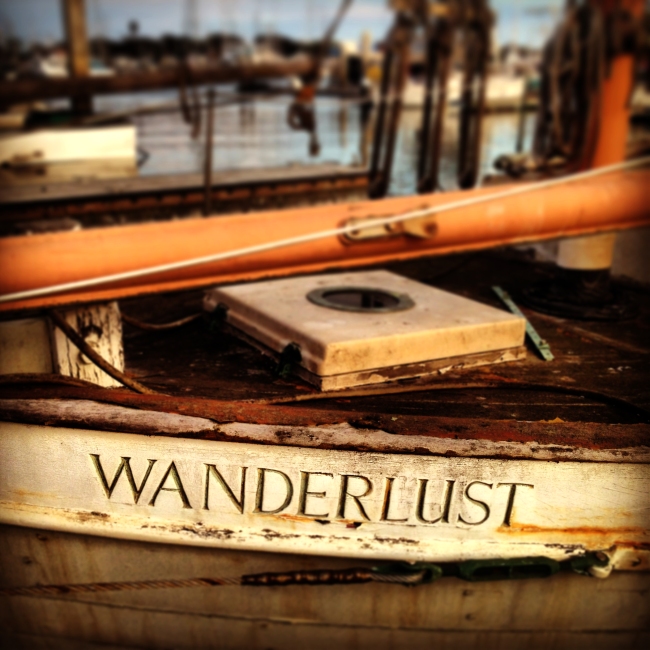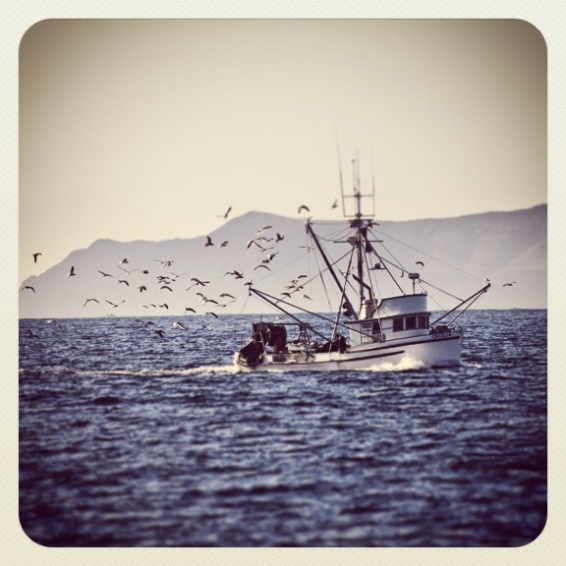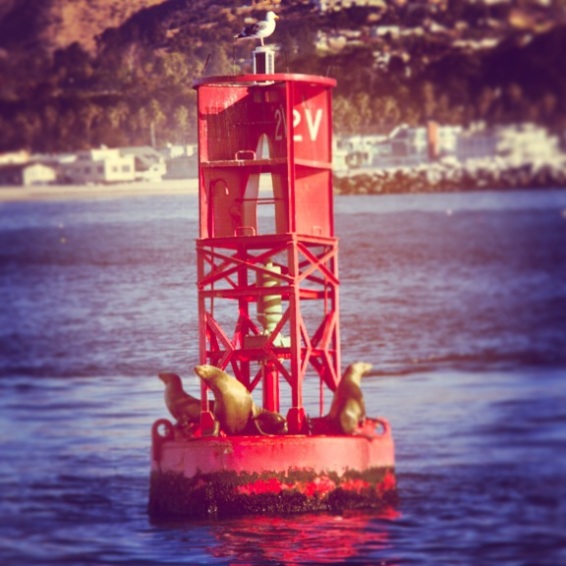
Jason picks me up at the Santa Barbara train station with his little boy Ewan in tow and we creep up the 101 in late evening traffic. Arriving at his house I greet his wife, Abby and meet their new daughter, Isla, for the first time. As usual, this trip is a mix of open road wandering and catching up with friends and family. It’s nice to insert myself into a more domesticated habitat from time to time, getting a glimpse into the family life Jules and I have set aside for now in favor of our rambling lifestyle.
Jason and I go way back, raised in the same small Kentucky town with a tight group of boys more family than friends. We’d roll in and out of each others homes like a pack of wolves devouring everything we found, staggering family dinner times to see how many meals we could squeeze into a single day, then crashing at whichever home we found ourselves at by the end of the night.
During the summer we’d often end up in Jason’s backyard shooting hoops. The court was not paved, just flat and grassy except for the “paint” worn dusty & dirty from years of drives to the well-worn hoop which was mounted on an old steel radio tower. Lawn mowers and random objects became our out of bounds and three-point markers. It was understood that these items were now rendered useless lest you disrupt the landmarks of our game. It was here that his dogged determination was first visible to me, taking on all comers and somehow never losing on his home court that I can remember. It’s that determination that brought him from Berea, Kentucky to recently finishing his PHD at UC Santa Barbara.
Sometimes in the middle of those dusty, backyard basketball sessions we’d hear the rumble and whistle, and all play would stop. The dust would settle, caking our sweaty skin and setting up an extra layer of filth for our poor mothers to launder. Around the bend would roll the train within 100 yards of the court and our conversations would automatically shift to what would happen if we were to jump on and ride the rails. So many times plans were hatched. We’d even ask around if someone could pick us up somewhere down the line…. yet we never did jump the train. I wonder now if that desire, never fulfilled, has anything to do with the fact that we’re among the seemingly few to ever get out of that small town? Perhaps in part it was all those years of wondering where we could have gone that helped us finally go.
Fast forward 20 years and now I’ve hopped off a train and I’m in Jason’s backyard again, only this time it’s in California and we’re packing our gear for a getaway.

I steal Jason away from his wife and two little ones and we head to the harbor in Ventura to hop aboard a ship bound for Channel Islands National Park. Sea Lions bark goodbye as we leave the dock, soon flanked by dolphins before passing more sea lions, this time atop a bright red buoy bobbing against blue waves. Distant spray signals gray whales in the channel, but there’s no breaching bonanza. Just large dark masses appearing on the surface like a small island oasis that slowly rises from the depths with a cloud of seaspray before slipping away again. Only an occasional tail flip against the backdrop of our destination, Santa Cruz Island, elude to their true form. We approach Scorpion Harbor and go ashore, greeted by a park ranger who gives us a quick lay of the land. We haul our oversize backpacks and gear a quarter mile or so to the flat bottom of a valley lined with Eucalyptus trees.


While setting up our tent I notice movement across the campground. I can’t believe my luck that I’ve already spotted one of my main photo targets, a threatened Channel Island Fox. This miniature fox is only found on six of the eight Channel Islands and nowhere else on Earth. I stealthily grab the big glass and while creeping into position, start snapping off frames as I approach, sure that he’s going to bolt any second. I creep close enough to fill my frame with his cute mug and begin envisioning the National Geographic layout. 15 minutes later when I’m chasing the same Channel Island Fox out of our tent I’m guessing I’m not the only photographer with this shot and think to myself that if this little beggar doesn’t leave us and our tent alone, he’s really going to be endangered. We witnessed other foxes hunting during our trip and acting what I would assume is “normal” but this little guy’s behavior was a mix of alley cat appearance and table scrapping pup. We fox-proofed camp and climbed the dusty trail to Potato Hill looking out over a vast waterscape. Far below a harbor seal appears as a gray speck slipping in and out of a green kelp forest while tourists bob and sway on the deck of a passing boat boasting dive tours. As the sun dips, it drops below a neighboring island and the sky turns golden, a west coast haze like it was made in Hollywood, which isn’t that far away geographically, but thankfully feels worlds apart. A few shots of bourbon with chocolate bar chasers in the twilight is the perfect nightcap and we turn in early as we’ve got work to do in a few hrs.





A damp cold cuts through the dark as I fight common sense and roll out of my sleeping bag searching for my headlamp. Despite the comfort of basking in the sun earlier, the temperature has dropped so much that Jason remarks it’s the coldest he’s ever been in a tent. I don’t believe it at first, but then take stock of the situation, inventory the six layers I’m wearing and my discomfort and think I may agree with him. I always say there must be more tourists sweatshirts sold in California than any other state because your eyes see sunshine and beaches, but the cold Pacific sucks the warmth from the land and delivers a wicked freeze to coastal campers. Especially if you decide get up in the middle of the night and stand fairly motionless on a misty beach for hours staring at your camera hoping the long exposure photographs are working. I’ve been a bit obsessed with photographing National Parks at night (see previous posts) so I couldn’t pass up the opportunity. Jason was eager to give it a try so here we are, freezing as we dance in and out of the camera frame with flashlights “painting” the rusty remains of farm equipment from the days when the island was a working farm.
After an hour or so, the black sky goes midnight blue, then begins to pale as the moon rises so bright it casts a windmill’s shadow onto the hillside. The stars retreat into the cold blue sky and us to the relative warmth of our sleeping bags.



It’s been great hanging with one of my oldest friends, something I don’t do often enough. It gives me time to reflect. Jason and I followed similar paths through high school and shortly after, even working at some of the same part time jobs and factory gigs, repeating the same steps in physical labor as our families before. I didn’t think there were other options. But he was the one that flipped the switch for me, choosing college over a full time job, and called me out when I was going to dropout and help support my unemployed girlfriend because I thought that was what I was supposed to do. If it hadn’t been for this, I’d probably still be working in a factory to this day, punching in and punching out. That’s a fine life for many, but I wanted a different life. He’s also the one that when our group was at it’s tightest, said he was moving away for an internship. This stopped me in my tracks. Leave home and friends behind to a place far away where you know no one? OK, it was only one state away in Tennessee, but that seemed REALLY far at the time. It’s always good to know people who, no matter how cliché it sounds, think outside the box. I don’t seek out advice from many people, but when I do, Jason is usually on the top of the list. We spent our remaining time on the island hiking, discussing life and the crazy journey to where we are today. I’m glad my journey finally involved hopping on a train.





























